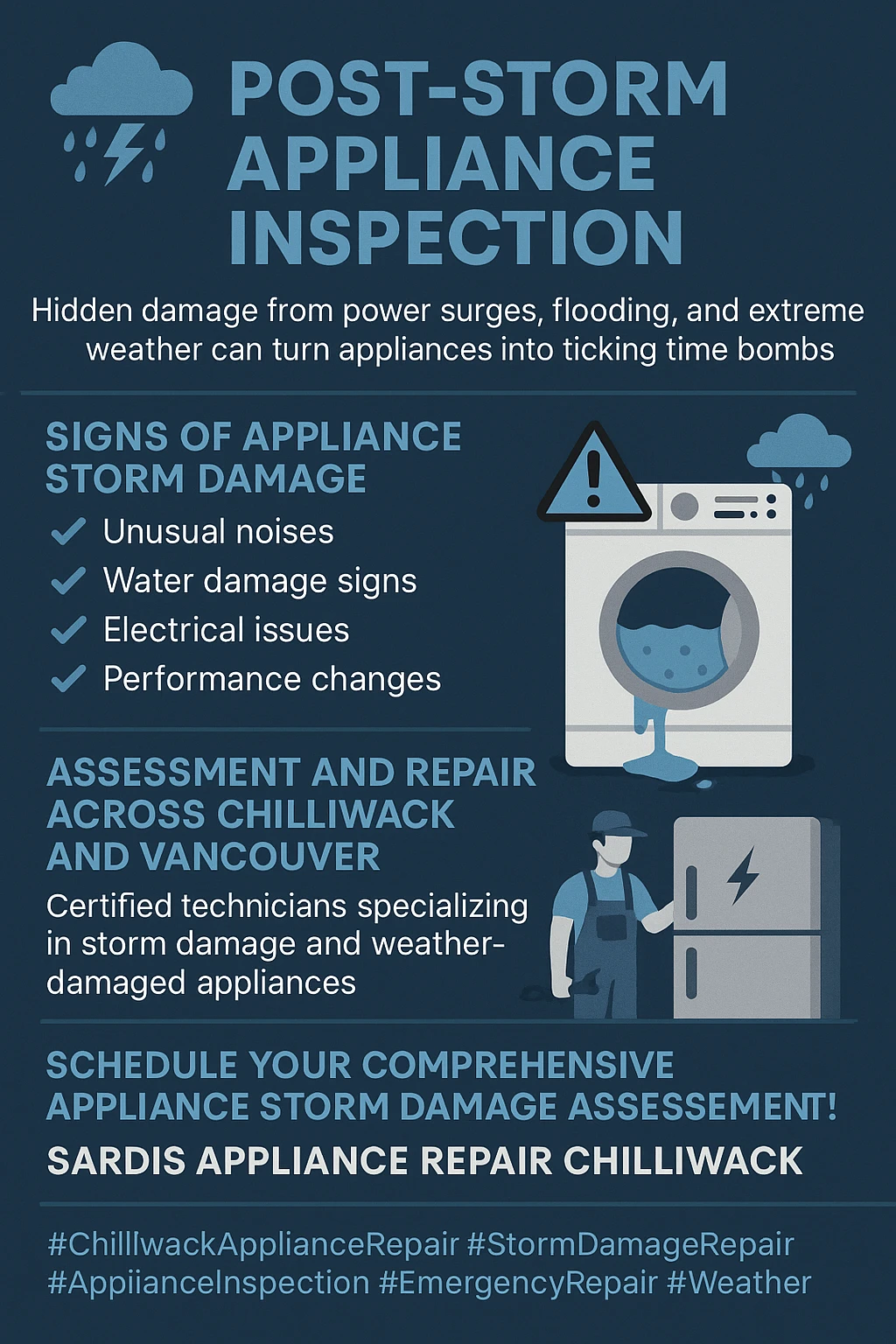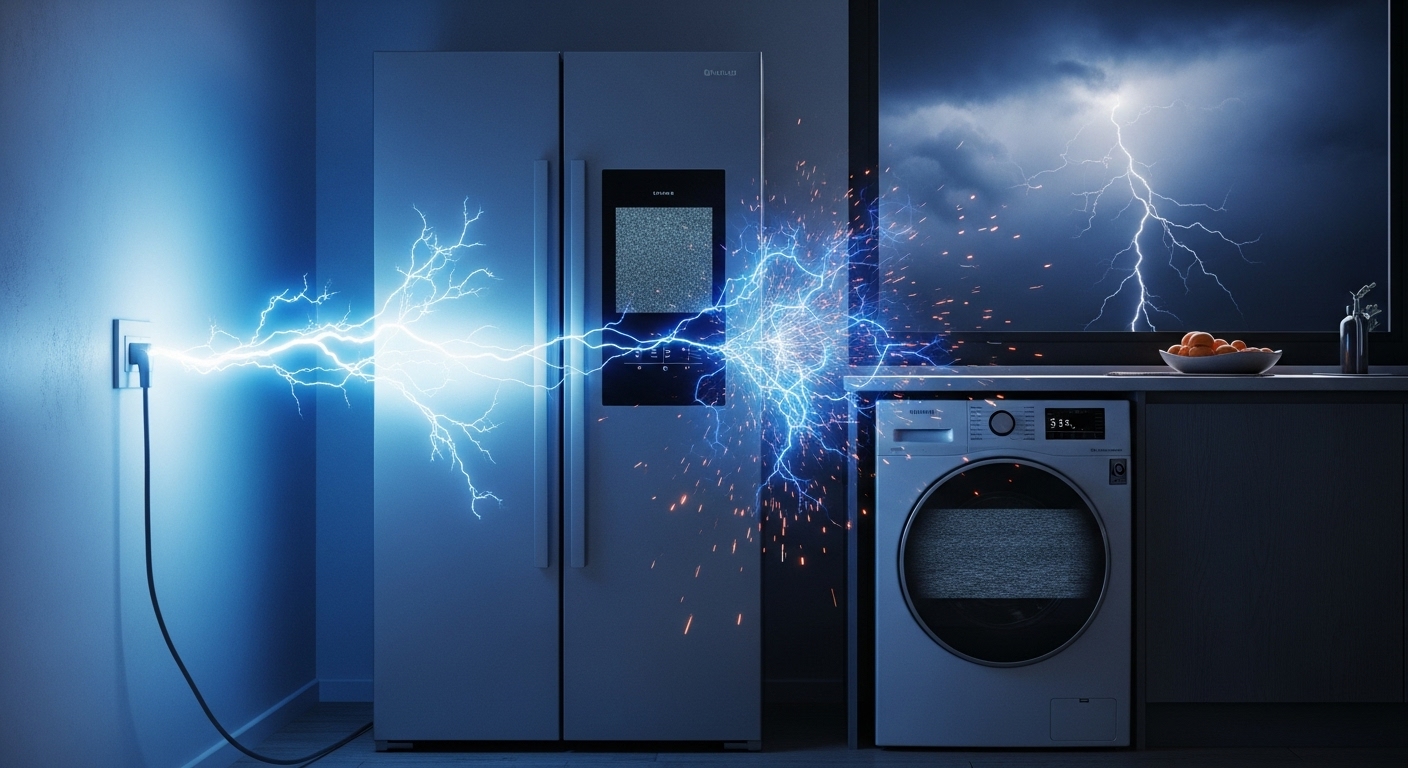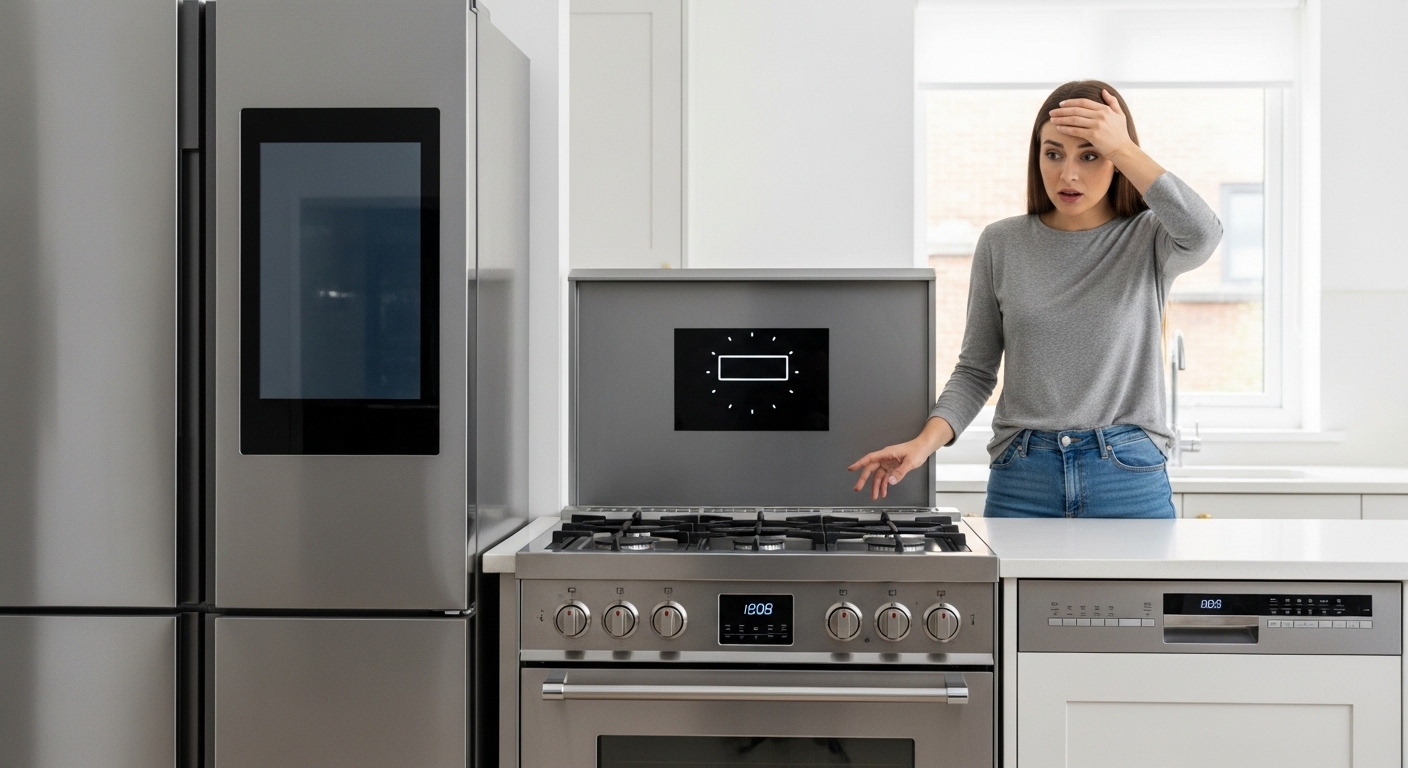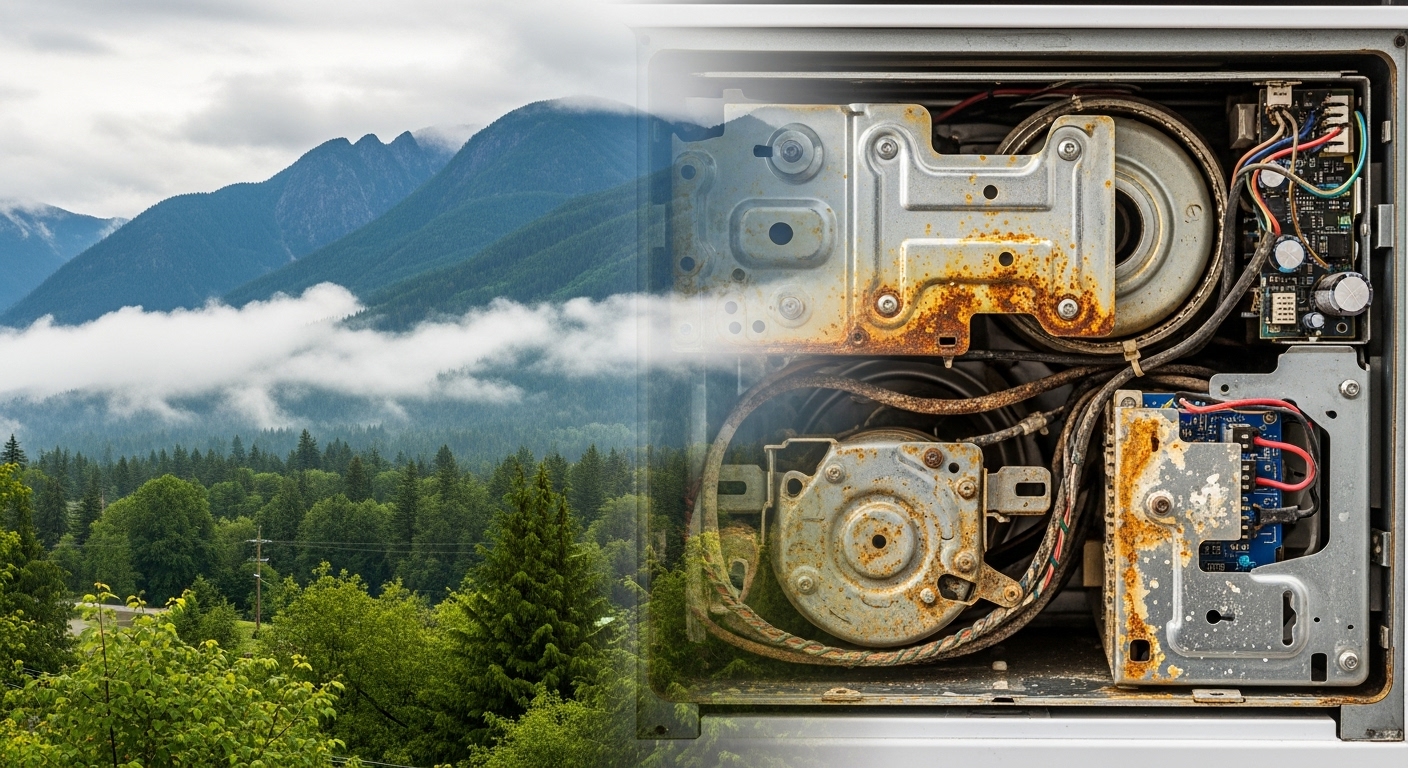Tired of watching your expensive appliances die mysterious deaths after every storm or power flicker? The truth is, extreme weather events are silently wreaking havoc on your home’s systems every single day – and most Chiliwack homeowners have no clue they’re sitting on a ticking time bomb worth thousands of dollars.
Picture this nightmare scenario: you’re relaxing at home in Chilliwack during one of our infamous Fraser Valley windstorms when suddenly the lights flicker. No big deal, right? Wrong. That innocent little flicker might have just signed the death warrant for your fridge, washing machine, or that fancy smart TV you splurged on last Black Friday. What most homeowners don’t realize is that the real danger to your appliances doesn’t come from the storm itself – it comes from what happens when the power comes back on.
Here’s the kicker that’ll blow your mind: the average Chiliwack home experiences approximately 20 power surges every single day, and most of them aren’t even caused by external storms. Between 60-80% of all power surges actually originate from inside your own home when your appliances cycle on and off throughout normal operation. Your dishwasher kicks on, your furnace cycles, your refrigerator compressor starts up – each of these events creates mini electrical earthquakes that slowly chip away at your appliances’ electronic components until they finally give up the ghost.
The financial reality is staggering when you add up what’s at risk. The average household contains roughly $15,000 worth of surge-sensitive electronics and appliances, and when these bad boys get fried by electrical surges, you’re looking at repair costs ranging from hundreds to thousands of dollars per appliance. But here’s what really gets me fired up – most homeowners think appliance failures are just “bad luck” or normal wear and tear, when in reality, they’re often completely preventable casualties of electrical warfare happening right in their own walls.
Key Outtakes:
- Chiliwack homes experience approximately 20 power surges daily, with 60-80% originating from inside your own home when appliances cycle on and off
- Power restoration after outages causes more appliance damage than the actual blackout, creating dangerous voltage spikes that can permanently fry electronics in seconds
- The “appliance trifecta crisis” – when your fridge, dishwasher, and range all fail simultaneously – typically indicates electrical system problems rather than coincidental breakdowns
- Fraser Valley’s unique climate factors can reduce appliance lifespans by 10-20% compared to drier inland locations due to humidity fluctuations and hard water mineral buildup
- Whole-house surge protectors cost around $300-500 but can prevent thousands in appliance replacement costs while protecting your entire home’s electrical system

The Hidden Appliance Apocalypse: How Storms Actually Kill Your Electronics
Let’s get real about what’s actually happening when Mother Nature decides to throw a tantrum in the Fraser Valley. Most people think storm damage to appliances is all about lightning strikes and dramatic power outages, but that’s like thinking sharks are the biggest danger at the beach when mosquitoes kill way more people. The real appliance killer isn’t the storm itself – it’s the electrical chaos that happens before, during, and especially after the weather event.
When BC Hydro crews work to restore power after an outage, they’re essentially jumpstarting entire neighborhood electrical grids simultaneously. This creates what professionals call “restoration surges” – massive voltage spikes that can overwhelm your home’s electrical system in milliseconds. Think of it like trying to drink from a fire hose after being thirsty for hours. Your appliances aren’t designed to handle that sudden rush of electricity, and their delicate electronic components get absolutely nuked by the voltage overload.

Modern appliances make this problem exponentially worse because they’re basically computers disguised as household equipment. Your Wi-Fi-enabled refrigerator, smart washing machine, and connected thermostat all contain sophisticated circuit boards that are about as tough as tissue paper when it comes to electrical fluctuations. These electronic brains operate within incredibly narrow voltage tolerances, meaning even small power hiccups can cause permanent damage that might not show up until weeks or months later.
The timing factor catches most homeowners completely off guard. You might think your appliances survived the storm just fine because they’re still running the next day, but surge damage often works like a slow poison. Control boards get weakened, sensors start malfunctioning, and heating elements begin degrading – all because of electrical stress from the storm event. By the time symptoms become obvious, you’re looking at expensive repairs or complete replacement.
What makes Chilliwack particularly vulnerable is our location between the Coast Mountains and the Pacific Ocean. This geographic positioning creates rapid weather changes and electrical grid stress that amplifies surge damage potential. When storms roll through the Fraser Valley, they don’t just affect individual homes – they create cascading electrical problems throughout the entire regional grid system that can impact appliances for miles around the actual storm path.
The Appliance Trifecta Crisis: When Everything Dies at Once
Building on the understanding of how individual appliances suffer storm damage, there’s a phenomenon that absolutely baffles most homeowners until they understand what’s really happening behind their walls. Picture waking up to discover that your refrigerator isn’t cooling, your dishwasher won’t start, and your range has gone completely dead – all on the same morning. Most people’s first thought is “What are the odds?” but experienced appliance repair techs know this isn’t cosmic bad luck. It’s actually evidence of a single catastrophic electrical event.

This “appliance trifecta crisis” happens because modern homes share electrical infrastructure in ways most homeowners never realize. Your kitchen appliances might each have their own dedicated circuits and separate breakers, but they often share common neutral wires, ground connections, or draw power from the same electrical panel sections. When a major surge event compromises these shared electrical pathways, the damage ripples through multiple circuits simultaneously, creating what looks like impossible coincidence but is actually predictable electrical failure.
The repair implications of understanding this pattern are huge for your wallet. Instead of calling three different appliance repair services and potentially paying three diagnostic fees, the smart move is calling an electrician first to diagnose your electrical system. In many cases, fixing a single electrical problem resolves multiple appliance issues, saving thousands of dollars compared to treating each appliance failure as a separate problem. This coordinated failure pattern is becoming increasingly common as homes pack more electronic appliances into electrical systems that weren’t designed for such sophisticated loads.
The age factor plays a crucial role in trifecta crisis susceptibility. Appliances approaching their expected service lifetime become increasingly vulnerable to electrical disturbances that newer units would easily tolerate. Research indicates that appliances exhibit multiple failure modes in approximately 25-30% of cases when they reach advanced age, suggesting that older appliances develop compound vulnerabilities that make them sitting ducks during electrical stress events.
Prevention becomes critical once you understand this pattern. Whole-house surge protection doesn’t just protect individual appliances – it protects the shared electrical infrastructure that connects them all. By preventing surge damage to your electrical panel, neutral wires, and ground connections, you’re essentially immunizing your entire kitchen against trifecta crisis failures that could cost $5,000-8,000 to resolve through individual appliance replacements.
Fraser Valley Climate: The Secret Appliance Killer
Now that we’ve covered the electrical dangers lurking in your walls, let’s talk about another appliance assassin that’s been quietly working against Chiliwack homeowners for decades. Our beautiful Fraser Valley location comes with hidden costs that appliance manufacturers never warn you about, and understanding these local factors can literally add years to your appliances’ lifespans while saving thousands in premature replacements.

The humidity factor alone is a massive appliance stressor that most people completely overlook. Chilliwack sits in this unique geographical pocket between mountains and ocean that creates rapid humidity swings throughout the day and season. Your appliances are designed to operate within specific humidity ranges, but when levels fluctuate dramatically – which happens constantly here – they’re forced to work overtime to maintain optimal performance.
 (604) 305-2992
(604) 305-2992 
 Schedule An Appointment
Schedule An Appointment 
